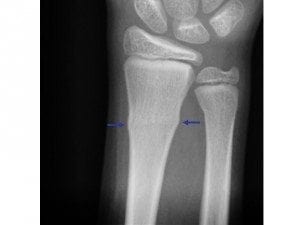Funtabulously Frivolous Friday Five 140
Just when you thought your brain could unwind on a Friday, you realise that it would rather be challenged with some good old fashioned medical trivia…introducing Funtabulously Frivolous Friday Five 140
Question 1
What would you smoke to bring on acute diffuse alveolar haemorrhage?
Reveal the Funtabulous Answer
Crack
that is…Cocaine. [Reference]
Question 2
What is the more common name for ephelides?
Reveal the Funtabulous Answer
Freckles [Reference]
Question 3
In what ways do Argyl Robertson pupils resemble prostitutes?
Reveal the Funtabulous Answer
Both ‘accommodate but don’t react‘ and are traditionally associated with neurosyphilis
William John Adie (1886 – 1935) described a second type of pupil that could “accommodate but not react.” Adie’s tonic pupil is usually associated with a benign peripheral neuropathy (Adie syndrome), not with syphilis.
With the advent of penicillin AR pupil are now very rare (takes decades to develop). A patient whose pupil “accommodates but does not react” almost always has a tonic pupil, not an AR pupil.
Loewenfeld distinguished between the two types of pupils by carefully observing the exact way in which the pupils constrict with near vision. The near response in AR pupils is brisk and immediate. The near response in tonic pupils is slow and prolonged. [Reference]
Further reading
- Douglas Argyll Robertson (1837–1909)
- Argyll Robertson pupils
Question 4
What is Lhermitte’s sign?
Reveal the Funtabulous Answer
An electrical sensation that runs down the back and into the limbs.
In many patients, it is elicited by bending the head forward. It can also be evoked when a practitioner pounds on the posterior cervical spine while the neck is flexed; this is caused by involvement of the posterior columns. Lhermitte’s sign is named for French neurologist Jean Lhermitte who popularised the previous work of Pierre Marie and Chatelin some seven years later.
It is associated with classically multiple sclerosis but has also been reported in transverse myelitis, Behçet’s disease, trauma, radiation myelopathy, vitamin B12 deficiency (subacute combined degeneration), and compression of the spinal cord in the neck from any cause such as cervical spondylosis, disc herniation, tumor, and Arnold-Chiari malformation.
It has been noted when long term users of SSRIs or SNRIs sudden stop their medication and finally it has been reported in nitrous oxide abusers because N2O depletes B12, leading to severe deficiency in the absence of supplementation. [Reference]
Question 5
Where does the Torus fracture derive its name?
Reveal the Funtabulous Answer
The convex upper member of the base of a Greek column
A torus is also the term given to the geometric shape of a doughnut, which is a cylinder wrapped into a circle (similar to what is seen at the base of a Greek column). This should not be confused with Taurus, which is the astrological term for a bull. [Reference]

FFFF
Funtabulously Frivolous Friday Five
Dr Neil Long BMBS FACEM FRCEM FRCPC. Emergency Physician at Kelowna hospital, British Columbia. Loves the misery of alpine climbing and working in austere environments (namely tertiary trauma centres). Supporter of FOAMed, lifelong education and trying to find that elusive peak performance.



